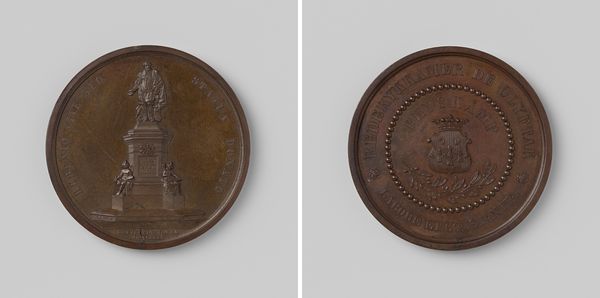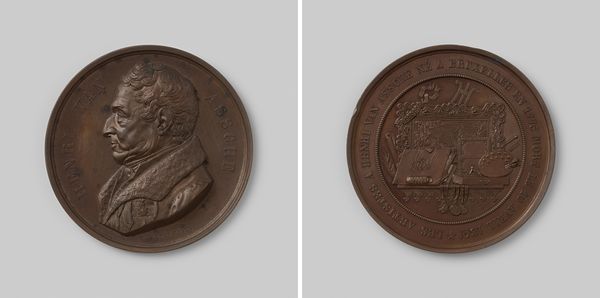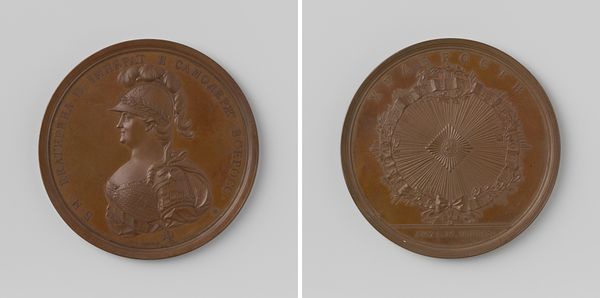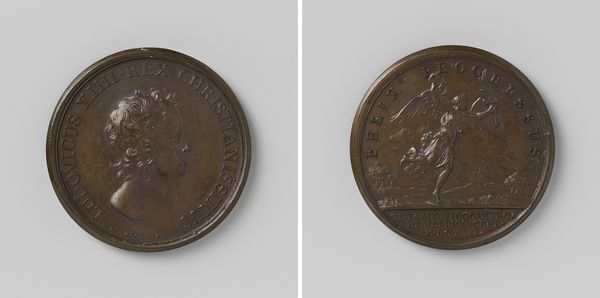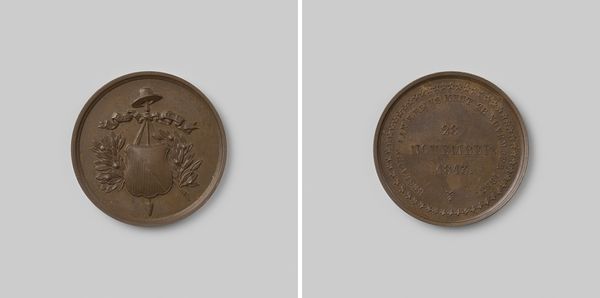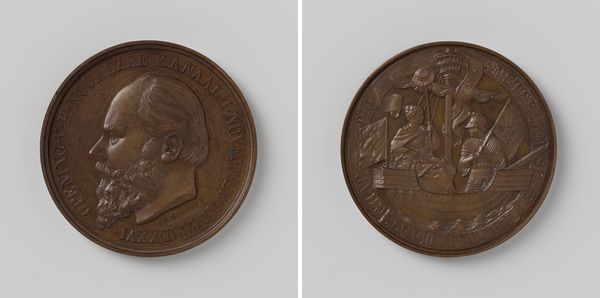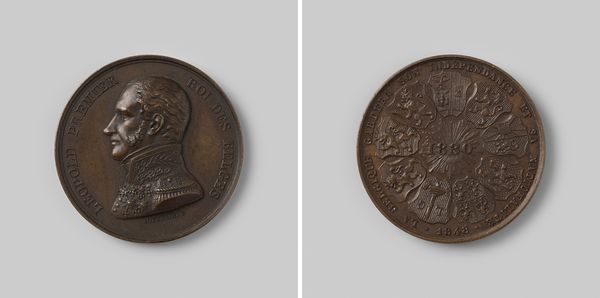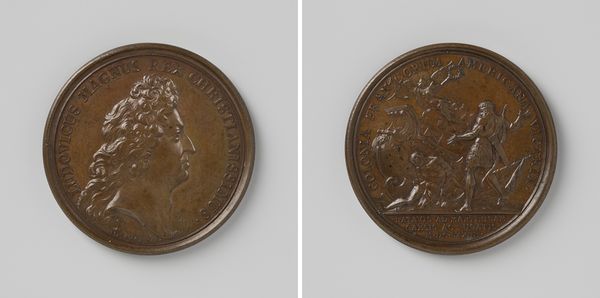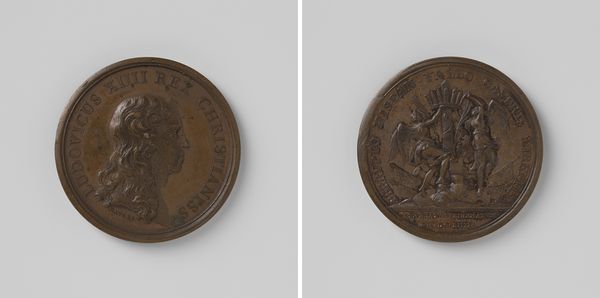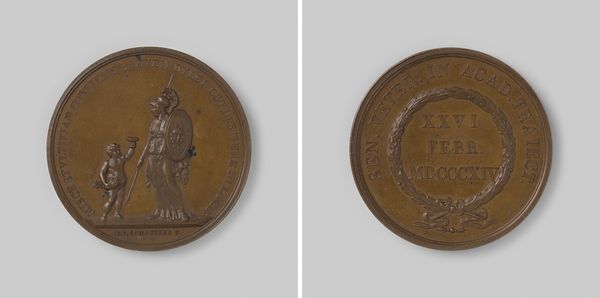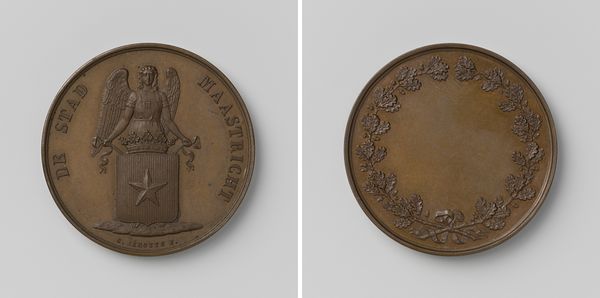
relief, bronze, sculpture
#
sculpture
#
relief
#
bronze
#
ancient-mediterranean
#
sculpture
#
history-painting
Dimensions: diameter 4.1 cm, weight 28.90 gr
Copyright: Rijks Museum: Open Domain
Curator: What a fascinating object! This is a bronze relief sculpture by Adrien Hippolyte Veyrat titled "Weigering van de Belgische kroon door de Hertog van Nemours 1831", which translates to "Refusal of the Belgian Crown by the Duke of Nemours, 1831." Editor: It's remarkably somber, isn’t it? The subdued tone of the bronze and the rather austere imagery contribute to a weighty sense of historical significance. It almost feels like a coin, two sides of the same story, presented simultaneously. Curator: That's an interesting point. Veyrat uses the material and form—bronze, often associated with commemoration and durability—to highlight the political drama of the Belgian Revolution and the offer of the throne to Louis, the Duke of Nemours, son of the French King Louis-Philippe. Let’s remember the context here; it’s a crucial point. Editor: Precisely! We have to understand the intricate web of European power dynamics in the 1830s. The Duke of Nemours refusing the Belgian Crown—a choice loaded with implications for Belgian independence and France's strategic position, so much identity and aspiration is here. Curator: And you can see this reflected on the obverse of the piece, depicting a lion with the words "Union Fait La Force"—Unity Makes Strength—representing the Belgian people, as well as the inscription on the reverse memorializing the exact date of the refusal, 11 October 1831. Its execution in bronze indicates the careful planning of sculptural reliefs to shape public sentiment. Editor: Beyond its aesthetic value as sculpture, think of its symbolic function as a tool. Its visual weight, along with that inscription commemorating that refusal, serves a very specific purpose in constructing national identity in post-revolutionary Belgium. Curator: Yes, this becomes more than a commemorative piece; it's a deliberate inscription of political decisions into the material culture of a young nation. Editor: It’s a really striking confluence of political history and material artistry. Thanks for sharing your material insight with me! Curator: My pleasure! Always a joy to examine art with a view to broader societal contexts.
Comments
No comments
Be the first to comment and join the conversation on the ultimate creative platform.
